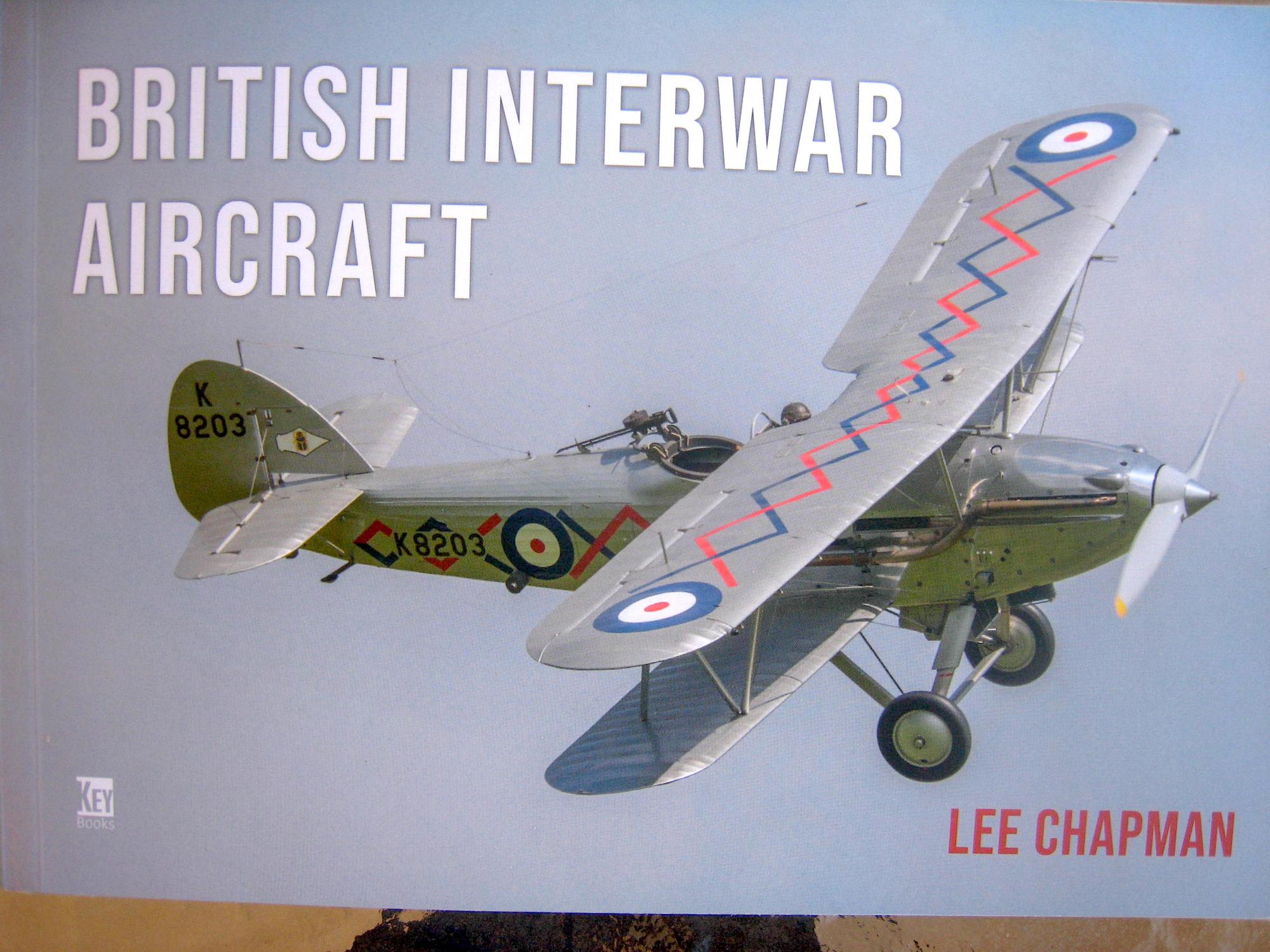British Interwar Aircraft
Historical Background
This book provides an in depth account of developments in aviation by the Royal Air Force from 1918, the end of World War I, until about 1939, the beginning of World War II. At the war’s end, the British had the world’s largest air force, and the immediate postwar period saw the breakup of the RAF, with most of the aircraft being disposed of, and government taxing policies regarding aircraft producers preventing companies from developing more modern aircraft. In short, technological development was discouraged, and some producers eventually just went out of business, while others produced aircraft at a very slow pace. The result was that some aircraft built during the Great War, as it was called, served on many years thereafter, some surviving even until the early thirties.
In the late twenties, a few manufacturers began to design and develop more modern types, with the all-wood biplanes slowly being replaced by aircraft with some metal construction, and with more powerful engines developed for racing, monoplanes became more common. However, some biplanes still prevailed, and the RAF and Royal Navy began the war with quite a few biplanes still in service, including the Gloster Gauntlet and Gladiator, the Fairey Swordfish and Albacore, and, of course, the DeHavilland Moth biplane trainers.
The main theme of this book is the survival of examples of some of these aircraft, as few people at the time thought that there was any good reason to preserve any of these types for historical purposes. Of course, this same attitude existed in nearly all the major countries of the world, and examples of these aircraft today are quite rare, with those aircraft that have been preserved being quite rare today, especially flying examples.
Book Description
The book contains 10 chapters, each dealing with a particular category of aircraft, describing surviving examples of the type, and their history. Of course, many aircraft were declared surplus by the military, and those that weren’t scrapped were sold to individuals, who operated them until they either were destroyed in crashes or simply wore out. As in the United States, the availability of surplus airplanes slowed down progress, as newly manufactured airplanes were definitely more expensive, and at the time, were very similar in flying characteristics and cost of operation. In addition, British government tax policies retarded the development of new types. The military kept operating some World War I vintage planes until the early thirties, beginning to replace them in the middle twenties with new types of bombers and fighters.
Each general classification of military aircraft, bombers, fighters, and trainers, is covered in a separate chapter, with general histories of surviving types, as well as a series of excellent color photos of surviving aircraft, along with their owners and the aircraft’s location. Especially interesting is the treatment of civilian aircraft which were in many cases used for racing and other competitive activities. The development of engines is also covered, and after reading the book, you should have a good understanding of aeronautical development during this period, and why so few aircraft survived. One area I found particularly interesting was the story of the Hawker firm, which supplied so many airplanes to the RAF during the twenties and thirties that the RAF was often referred to as the Hawker Air Force, since so many Harts, Demons, Furys, Nimrods and other derivatives of the design served with the RAF until well into World War II. And a surprising number of them have survived. And there are some good models of them currently available.
The last chapters discuss the later development of fighter monoplanes, including the Hurricanes, Spitfires, and Blenheims, and how even those planes became collector’s items after World War II ended. The book actually covers the twenties and thirties from a historical standpoint, while it also covers the current situation as far as vintage airplanes is concerned. Many of these aircraft were only restored to a condition suitable for display, while few were actually rebuilt to flying condition and are active with flying museums. Every so often, a crashed example is discovered in some remote place, and these are now avidly sought out by collectors and enthusiasts for restoration, sometimes to flying condition.
Book Features
The book is organized into ten chapters, including an introduction, World War I aircraft used by the military, light aircraft development, beginnings of commercial air travel, racing and record breaking aircraft, military aircraft of the thirties, the Hawker aircraft, and late thirties aircraft used in World War II. Each chapter describes some of the important surviving aircraft, their operational histories, and includes excellent quality color photos showing the aircraft on the ground or in flight, with some detail and interior views. Non-flying aircraft are illustrated as displayed in museums or storage areas. For aircraft with a number still in existence, photos of several planes are shown, sometimes even flying in formation.
From a modeling standpoint, the photos show reconstructed and restored aircraft, not actual operational types. The details are there, and as a modeler I will find the book extremely useful when modeling aircraft of this vintage as most of them have been restored with the correct colors, markings, and details.
Recommendation
As a modeler, I can highly recommend this book. As a historian, I find that the book gives a very useful interpretation of that period of history which has been inadequately covered by the regular historical texts. Don’t miss out on this one. It is interesting and enjoyable reading, and infinitely superior to watching TV.
Thanks to Casemate Publishers for the review copy.










Comments
Add new comment
This site is protected by reCAPTCHA and the Google Privacy Policy and Terms of Service apply.
Similar Reviews